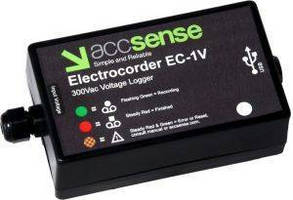Recording Closed-Loop Control System Cycles for HVAC Savings

Identify Opportunities to Save Energy with a Data Logger
CHESTERLAND OH —
Frequent on/off cycling can waste real money and lower system life in many closed loop control systems, including:
• Thermostatically-controlled heating systems
• Pressure-controlled compressor systems
• Ambient luminance-controlled lighting systems
As an example of the savings data loggers can identify, CAS DataLoggers recently supplied an Accsense Electrocorder data logger to monitor a customer's thermostatically oil-fired central heating system for their office building over a period of 6 months. After collecting the data, users graphed the following astonishing results:
This data shows that over the recording period there were 1363 times that the boiler came on for only 2 minutes or less! Additionally, the boiler came on another 255 times for just between 2 to 4 minutes. These boiler-on events were all requested by the thermostat controller. Adding up all the cumulative time that the boiler was on, our customer found that for 33% of the time, the boiler was only on for a period of 10 minutes or less, and 40% of the time it was only on for a period of 15 minutes or less.
This data is significant because for these short duration 'on' cycles of 10 minutes or less, a boiler can't add much heat to the building environment. Most of the fuel is used to start the boiler and then gets lost in heat losses in the boiler and its surrounding area. If you can eliminate these short duration on cycles, you can reduce your energy consumption by almost the corresponding amount. Analyzing the data from the data logger, users estimated a saving of 30% to 40% if they could find a way to eliminate these 'on' demands of 15 minutes or less.
Q. How do you solve this problem?
A. Use a delay 'on' timer.
We subsequently developed a 10-minute delay timer for our customer which takes the 'on' signal from the thermostat and when it receives this (which would normally turn the boiler on), it now waits for 10 minutes before passing on this signal to turn the boiler on. This eliminates all cycling below 10 minutes.
The customer used two Accsense Electrocorder EC-1V Single Phase Voltage data loggers to monitor their new system over a period and found:
Cumulative demanded boiler 'On' Time: 21:02 hours
Cumulative actual boiler 'On' Time: 9:57 hours
Savings (demanded 'on' time but not given): 11:05 hours = 52% energy reduction!
Number of 'on' events demanded: 184 on events
Actual number of 'on' events: 25 on events
Savings (demanded 'on' event but not given): 159 on events = 86% reduction in 'on' cycles!
Average number of demanded 'on' cycles per year: 8,375
Average number of actual 'on' cycles per year: 1,156
Saving (demanded 'on' event but not given): 7,219 = 86% reduction in 'on' cycles!
Conclusion: We achieved a 52% reduction in fuel consumption over the trial period.
Since the demand signal is subject to a 10-minute delay, when the demand is a real temperature demand, the temperature continues to fall slightly during the 10-minute delay. That means that when the boiler comes on, it takes slightly longer to bring the office building up to the set point of 70°F, therefore using more energy. However, even accounting for this, our customer still achieved a savings of 52%!
The obvious disadvantage with this setup is that the timer introduces a time delay between the demand and the supply for heat. At first this would seem to have an effect on the controlled internal ambient temperature, which would not be as tightly controlled around the set point (70°F in this case). However, the data recorded show that 56% of the demands for energy were not real temperature demands--they were just the result of the thermostat oscillating (on/off) around the temperature set point. The customer saw no noticeable effect on internal office temperature during the trial of the timer. Basically the timer has the effect of introducing a dead band. As an added benefit, this reduction in run time by 52% and the reduction in the number of 'on' cycles by 86% also has a significant effect on boiler life.
The Accsense Electrocorder EC-1V data logger is widely used to monitor voltage variations on site, allowing voltage problems to be highlighted quickly for further investigation using traditional recorders. When recording the Electrocorder will store the average voltage over the period chosen (1 sec to 60 min), and also records the highest (max) & lowest (min) cycle values during that period.
The EC-1V was designed for cycle analysis in many different applications:
Compressor cycling can be an issue in pneumatic compressor systems in industry, where the set point is a pressure level and the system tries to maintain a set point. A better method of control can be to use a dead band system, that is, where minimum and maximum pressures are defined separately. The minimum pressure (say 10 bar) activates the 'on' signal and the maximum pressure (say 15 bar) activates the 'off' signal.
With pumps and compressors the reduction of the number on on/off cycles has a major effect on the life of the system. If you have a system with a single defined pressure, then the introduction of a timer delay can help reduce cycling. For pneumatic systems it is important to look at the minimum working pressures of the items fed from the compressor reservoir and also the maximum air demand before setting the delay times. It's important that the delay not be so long that the air reservoir is depleted by air demand before the timer allows the compressor to start.
Controlled Lighting is also prone to cycling. In this application the set point is a lux level, and the system turns on the lighting whenever that minimum level is observed. Some systems use a dead band system where a minimum lux level turns the lights on and a maximum level turns the system off again. Cycling normally only happens at dawn or dusk due to the low light level as opposed to throughout the day. The improvements are limited by the fact that light levels normally continue to increase at dawn and decrease at dusk rather than maintaining at a given level.
For more information on how Accsense Electrocorder can highlight savings areas, troubleshoot electrical anomalies, or to find the ideal solution for your application-specific needs, contact a CAS Data Logger Applications Specialist at (800) 956-4437 or visit the website at www.DataLoggerInc.com.
Contact Information:
CAS DataLoggers, Inc.
12628 Chillicothe Road
Chesterland, Ohio 44026
(440) 729-2570
(800) 956-4437
sales@dataloggerinc.com
www.dataloggerinc.com




